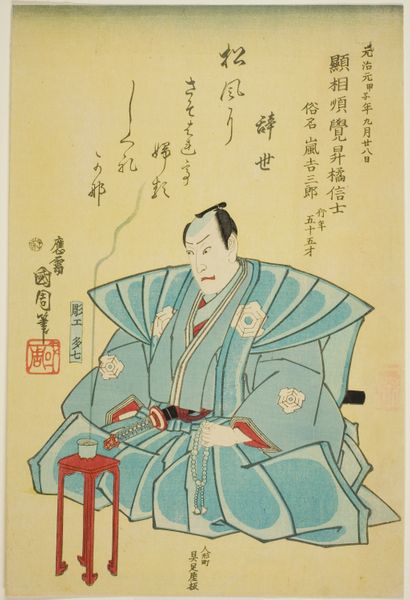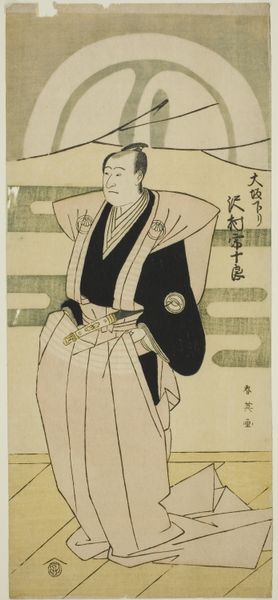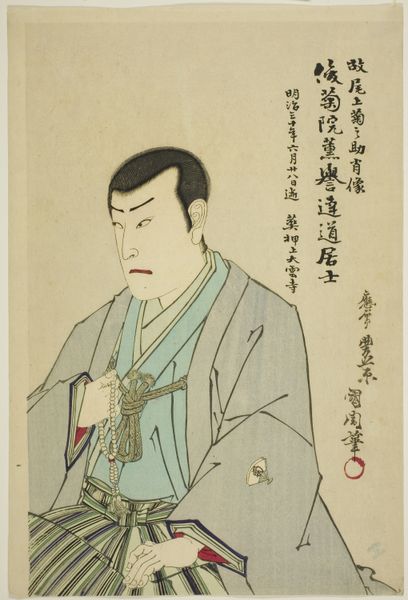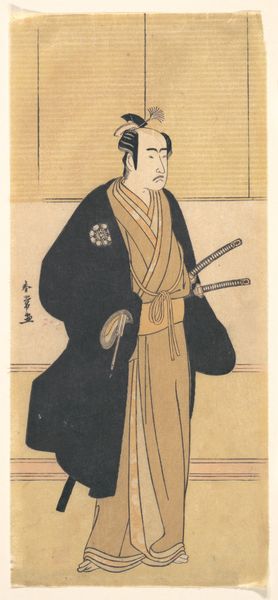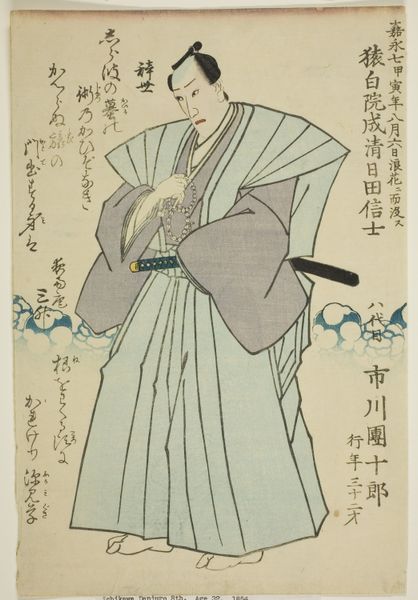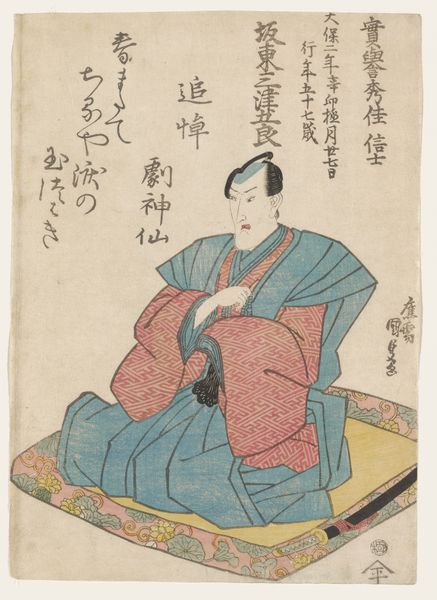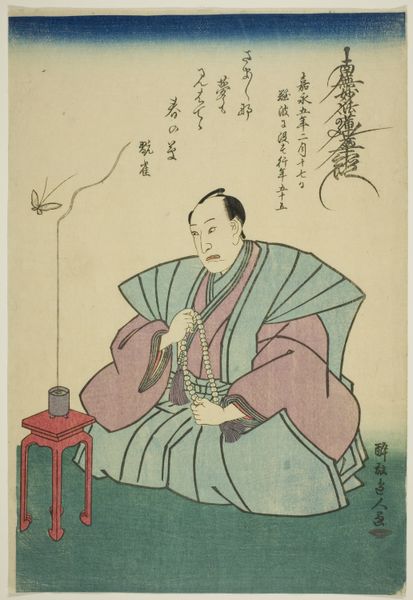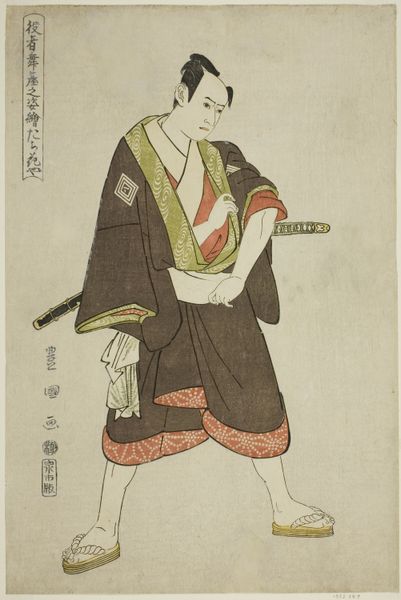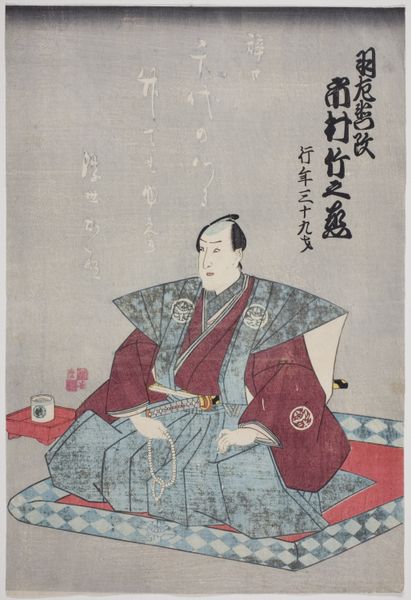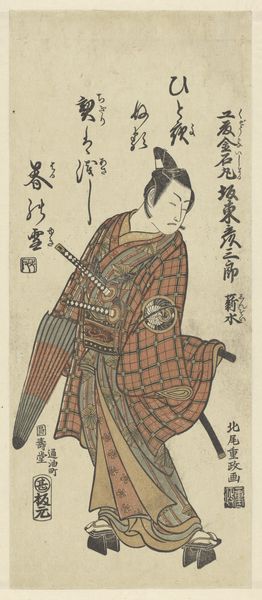
Memorial Portrait of the Actor Matsumoto KōshirōV Possibly 1838
0:00
0:00
print, ink, woodblock-print
#
portrait
#
aged paper
#
toned paper
# print
#
asian-art
#
ukiyo-e
#
figuration
#
ink
#
woodblock-print
#
watercolour illustration
Dimensions: 13 13/16 × 9 13/16 in. (35.08 × 24.92 cm) (image, sheet, vertical ōban)
Copyright: Public Domain
This woodblock print, made by Utagawa Kunisada, is a memorial portrait of the actor Matsumoto Kōshirō V. Kunisada worked in Japan during the Edo period, a time when woodblock prints became closely associated with urban culture and the rise of the merchant class. The image is full of meaning created through visual codes, cultural references, and historical associations. Prints such as these played a critical role in promoting actors and theatrical productions. As an actor became more popular, prints would become more valuable. The print commemorates the actor, who is dressed in character. The cultural and economic context of Edo-period Japan shaped this artwork. The patronage of the merchant class allowed artists like Kunisada to thrive, and institutions such as the Kabuki theater became central to city life. The print immortalizes a popular performer and, in doing so, demonstrates the social and cultural significance of actors in Japanese society. Historians consult theater records, biographies, and other primary sources to understand the importance of woodblock prints in Edo-period Japan. Art is not created in a vacuum, and its meaning is always contingent on its social and institutional context.
Comments
No comments
Be the first to comment and join the conversation on the ultimate creative platform.
